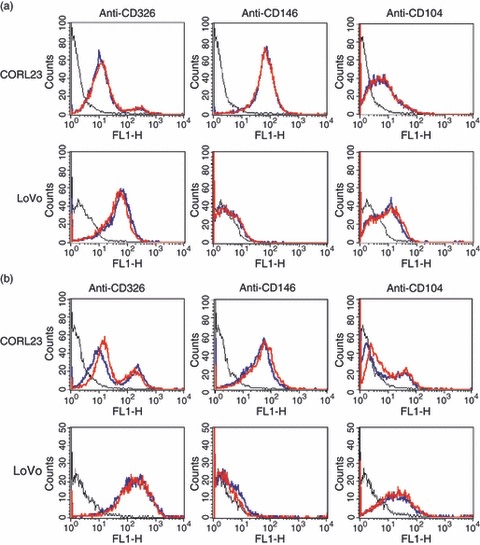Cat. #151214
Anti-MUC18 [OJ79c MUC 18]
Cat. #: 151214
Sub-type: Primary antibody
Unit size: 100 ug
Availability: 3-4 weeks
Target: MUC18 (CD146)
Class: Monoclonal
Application: FACS ; IHC ; IF
Reactivity: Human
Host: Mouse
£300.00
This fee is applicable only for non-profit organisations. If you are a for-profit organisation or a researcher working on commercially-sponsored academic research, you will need to contact our licensing team for a commercial use license.
Contributor
Inventor: Helen Turley
Institute: University of Oxford
Tool Details
*FOR RESEARCH USE ONLY (for other uses, please contact the licensing team)
- Name: Anti-MUC18 [OJ79c MUC 18]
- Alternate name: ADMCKD, ADMCKD1, Breast carcinoma associated antigen DF3, Breast carcinoma-associated antigen DF3, CA 15-3, CA15 3, CA15 3 antigen, CA15.3, Cancer antigen 15-3, Carcinoma associated mucin, Carcinoma-associated mucin, CD 227, CD227
- Research fields: Cancer;Cell biology;Cell signaling and signal transduction;Immunology;Stem cell biology;Tissue-specific biology
- Clone: OJ79c MUC 18
- Tool sub type: Primary antibody
- Class: Monoclonal
- Conjugation: Unconjugated
- Molecular weight: 130 kDa
- Reactivity: Human
- Host: Mouse
- Application: FACS ; IHC ; IF
- Description: Monoclonal antibody directed against a marker of melanoma and metastasis.
- Immunogen: Recombinant MUC18 (D1-D5) Fc chimeric protein
- Immunogen uniprot id: P43121
- Isotype: IgG1 kappa
- Myeloma used: Sp2/0-Ag14
- Recommended controls: A-375 cell, SK-MEL-24 cell, HUV-EC or HeLa cell lysates. Tonsil or Melanoma.
Target Details
- Target: MUC18 (CD146)
- Molecular weight: 130 kDa
- Tissue cell line specificity: A-375 cell, SK-MEL-24 cell, HUV-EC or HeLa cell lysates. Tonsil or Melanoma.
- Target background: CD146 has been identified as a cell adhesion molecule and is useful in differential diagnosis of certain lesions including melanomas and various types of gestational trophoblastic lesions. CD146 is expressed at cell-cell junctions in all endothelial cells. In addition to its recognized role as a calcium-independent cell adhesion molecule, CD146 may also act as a signal transduction molecule in the recruitment of Fyn kinase, and in the subsequent tyrosine-phosphorylation of intracellular proteins involved in actin cytoskeleton assembly. CD146 expression may allow melanoma cells to interact with cellular elements of the vascular system, thereby enhancing hematogenous tumour spread. It is found on 80% of advanced primary human melanomas and correlates well with development of metastatic disease. It is associated with poor prognosis.
Applications
- Application: FACS ; IHC ; IF
Handling
- Format: Liquid
- Concentration: 1 mg/ml
- Unit size: 100 ug
- Storage buffer: PBS with 0.02% azide
- Storage conditions: Store at -20° C frozen. Avoid repeated freeze / thaw cycles
- Shipping conditions: Dry ice
References
- Smith et al. 2011. Immunology. 132(2):256-65. PMID: 21039468.
- Sato et al. 2010. Mod Pathol. 23(11):1458-66. PMID: 20657552.
- Mono- and tri-cationic porphyrin-monoclonal antibody conjugates: photodynamic activity and mechanism of action.
- Iohara et al. 2008. Stem Cells. 26(9):2408-18. PMID: 18583536.
- Crisan et al. 2008. Cell Stem Cell. 3(3):301-13. PMID: 18786417.
- A perivascular origin for mesenchymal stem cells in multiple human organs.
- A novel stem cell source for vasculogenesis in ischemia: subfraction of side population cells from dental pulp.
- Pruszak et al. 2007. Stem Cells. 25(9):2257-68. PMID: 17588935.
- Pruszak et al. 2007. Stem Cells. 25(9):2257-68. PMID: 17588935.
- Markers and methods for cell sorting of human embryonic stem cell-derived neural cell populations.
- Kuzu et al. 1993. Lab Invest. 69(3):322-8. PMID: 7690867.
- Expression of adhesion molecules on the endothelium of normal tissue vessels and vascular tumors.



